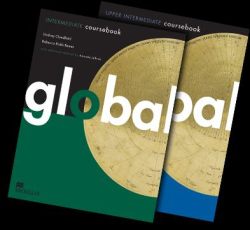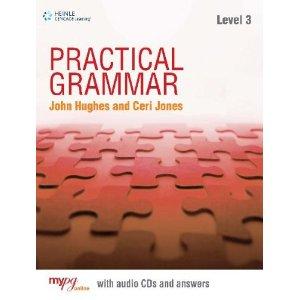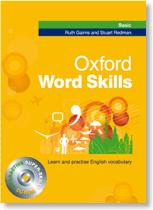Short Book Reviews
Hanna Kryszewska, Poland
Hanna Kryszewska is a teacher, teacher trainer, trainer of trainers. She is a senior lecturer at the University of Gdańsk, and EU Teacher Training College where she trains pre-service teachers. She is also Director of Studies at SWPS, Sopot, Poland. She is co-author of resource books: Learner Based Teaching, OUP, Towards Teaching, Heinemann, The Standby Book, CUP, Language Activities for Teenagers, CUP and a course book series for secondary schools: ForMat, Macmillan. She is also co-author of a video based teacher training course: Observing English Lessons. Hania is a Pilgrims trainer and editor of HLT Magazine.
E-mail: hania.kryszewska@pilgrims.co.uk

Global. Pupil’s Book: Pre-Intermediate. L. Clanfield, A. Jeffries et al. (2010) Macmillan. ISBN 978-0-230-03309-2, pp160.This course book is one in a series of a 6 level adult course which I am sure teachers will welcome. There are different ways of writing coursebooks and I believe the Macmillan writing team have cracked how to do it really well. I think the Straightforward series has been a very good start but Global takes the art of writing and thinking about coursebooks a step further. In fact, it puts the best selling courses of the past in perspective and will surely make teachers choose Global for their adult learners. No wonder Globalhas won the English speaking union award for the best book of 2010 and is nominated for a British Council ELTon award for innovation in 2011.
The secret of Global lies in a very good choice of texts, innovative activities, excellent artwork, technical support/blended learning and a brilliant teacher’s book, just to name some. The topics in the book are the usual suspects i.e.: individual and the society, eating and drinking, art and music etc. However, the choice of texts is innovative and fresh. For the subject individual and the society there are facts about ID cards, identity theft, an extract from the play “Six degrees of Separation”, for eating and drinking there is comfort food, tips from chefs for successful cooking, people behind the famous drinks and ethnic food, etc. As a teacher with over 30 year experience and exposure to coursebooks, I find the encounter with Global very refreshing and inspiring. Working with Global the teacher will find ideas for researching authentic materials and following trails outlined by the coursebook. The only area which I find a bit disappointing and very traditional is the presentation and practice of grammar.
The artwork of the book is not overpowering, and the choice of photographs and other artwork is very tasteful. You will find no cheap or dowdy photography. However, I find the cover of the Pre-Intermediate course a bid sad. A lot of grey mixed with black and white…Yet other levels are a bit more cheerful.
The teachers book is very well written and apart from hints, ideas and lesson outlines, it also contains essays from ELT experts on e.g. blended learning by Pete Sharma, pronunciation by Jonathan Marks, the future of the English language by David Crystal and other areas which will be of great interest for the teachers. David Crystal features also in the course book in the Global English section. It is a brilliant section on various aspects of the English language but I fear some pre-intermediate students might find it a bit hard to follow linguistically. At least mine would.
As a truly modern coursebook for the 21st century learner, the course book comes with an e-workbook, Website support and Global Digital which is an interactive version of the course book which can be used with a computer, data projector or interactive whiteboard. I am sure teachers will enjoy the course and will learn a lot for themselves about blended learning when using it in class.

Practical Grammar - Level 3. J. Hughes and C. Jones (2011) HEINLE. ISBN 978-1-4240-1806-2, pp 256+ 2 audio CDs. This grammar book is part of a three level grammar course for classroom use and/or self-study. The book is divided into very manageable units, each devoted to a different area of grammar. A unit is a two page spread – the left hand page summarises the grammar, the right hand one offers exercises. This kind of layout is quite popular in grammar books but what is new is frequent use of CD recordings to check the answers. I am sure auditory learners will appreciate this feature a lot. Grammar is taught in natural and meaningful contexts with focus on correct pronunciation. The book also highlights common errors and offers regular review units. The books comes with the mypg feature, i.e. extensive additional practice… just peel off the label and use the pin code to access materials online. The book is a good example of blended learning: a perfect marriage of a traditional grammar book with online resources. The book is tastefully illustrated with cartoons, drawings and photos. This feature will keep the visual learners happy.

OxfordWord Skills - Basic. R. Gairns and S. Redman (2008) Oxford. ISBN 978-0-19-462003-1, pp 253 + CD-ROM. The book belongs to a series of vocabulary practice resource books: basic, intermediate and advanced. With the book students can learn and practice the lexis they needs. It is important that the book focuses not only on single words but also on lexical chunks and phrases used in spoken and written English. It also pays attention to the way learners can improve their ways of learning grammar such as mnemonic techniques. The authors bring back to life the ‘mask’ so widespread in the audio-lingual period of ELT. The authors call it the ‘card’ but its function is the same:. learn the lexis, then cover parts of the page, recall and finally unmask/uncover the correct answer. It is really nice to see this forgotten small technique come back. The book also comes with a modern technique to revise vocabulary. With the help of a CD-ROM learners can listen and practice saying the words. This book is a new generation of vocabulary practice resource books.

The Teaching English Through Multiple Intelligences course can be viewed here
The Basic IT in the Classroom can be viewed here
The Using Technology in the Classroom – Level 2 course can be viewed here


|